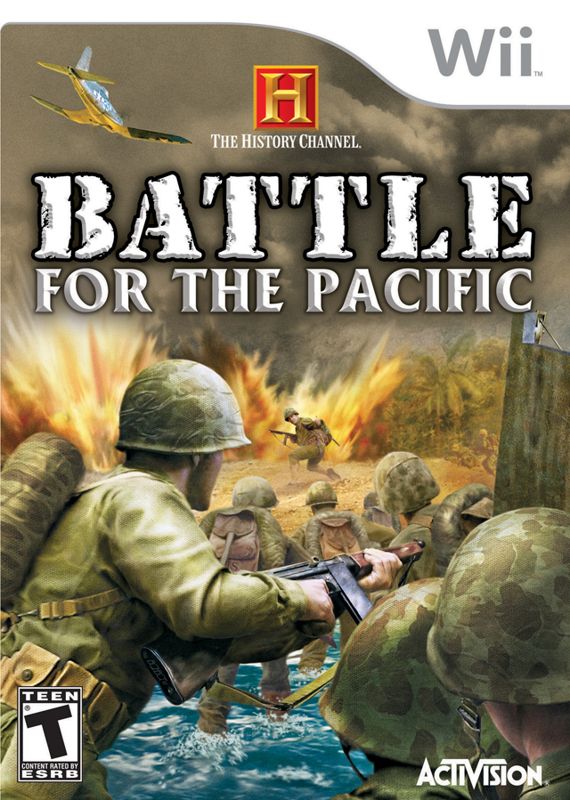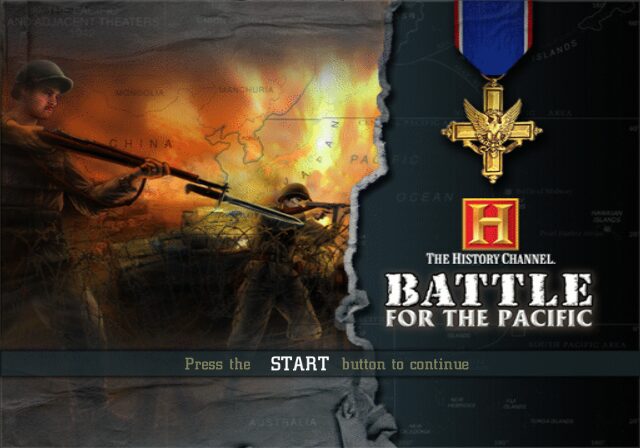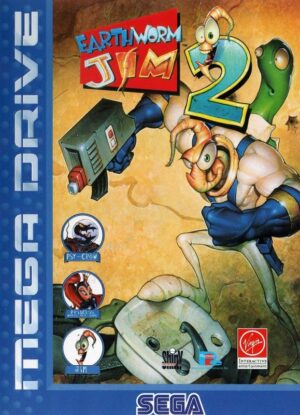Retro Replay Review
Gameplay
The History Channel: Battle for the Pacific puts you in the boots of Lieutenant Jonathan Farrel, a lone special-ops soldier operating in the dense jungles and sandy beaches of the Pacific Theater. Across 12 missions, you’ll navigate treacherous terrain and enemy strongholds with a surprising degree of freedom. Whether you choose to flank Japanese encampments via an alternate route, sneak through tall grass, or hunker down behind a rock for a sudden ambush, the mission structure encourages creative problem solving rather than strict corridor shooting.
(HEY YOU!! We hope you enjoy! We try not to run ads. So basically, this is a very expensive hobby running this site. Please consider joining us for updates, forums, and more. Network w/ us to make some cash or friends while retro gaming, and you can win some free retro games for posting. Okay, carry on 👍)
Cover mechanics play a central role in your survival: you can dive behind logs, low walls, and debris to escape enemy fire, but reloading your weapon comes with a significant drawback. Each time you chamber a new round, a blur effect temporarily clouds your vision, forcing you to time your reloads carefully or risk losing situational awareness. This design choice adds tension to every firefight but can also frustrate players who prefer uninterrupted action.
Enemy AI is serviceable, with Japanese soldiers patrolling predictable paths, calling for reinforcements when they spot you, or taking cover themselves. They won’t outsmart a seasoned gamer, but they do provide moments of genuine challenge when you’re outnumbered or pinned down. Occasional spawn issues and pathfinding quirks show their face—sometimes foes pop up too close for comfort—but overall, encounters remain engaging thanks to varied objectives such as escort missions, demolition tasks, and stealth infiltrations.
It’s worth noting that the PS2 and Wii editions veer from the 360/PS3/PC versions in gameplay focus. On Wii, motion controls offer a unique aiming experience—albeit less precise—while the PS2’s simpler hardware means shorter draw distances and slower framerates. Both consoles, however, lean into Lt. Farrel’s solo narrative, foregoing the squad-based tactics and radio chatter found in the higher-end versions. If you crave a personal soldier’s journey with self-narration, these editions deliver a more intimate gameplay style.
Graphics
Visually, Battle for the Pacific aims for historical authenticity over flashy special effects. Jungle foliage, muddy waterbanks, and tropical villages capture the oppressive atmosphere of the Pacific front. Texture work is detailed enough to distinguish between imperial helmets and American M1 Garands, and weapon models are faithful replicas of period hardware. Environmental variety—from beach landings at dawn to moonlit river crossings—helps keep each mission visually fresh.
Every level kicks off with a documentary-style video featuring archival footage, maps, and voiceover context. These prologue clips not only set the tone but also serve as brief loading sequences that educate players on the real-world events they’re about to reenact. The transition from grainy black-and-white newsreel to 3D battlefield is never seamless, but it reinforces the History Channel branding and underlines the game’s educational bent.
On the 360, PS3, and PC, dynamic lighting lends depth to jungle canopies, and distant gunfire is accompanied by heat haze over burning foliage. Shadows fall realistically across uneven ground, and muzzle flashes illuminate nearby vegetation. Conversely, the PS2 and Wii versions simplify shaders and reduce draw distance, resulting in flatter lighting and more noticeable pop-in. Yet these versions still manage to convey the humid, claustrophobic jungle vibe, thanks to moody color palettes and dense undergrowth.
Character animations are serviceable if occasionally stiff. Lt. Farrel’s movements—reloading, sprinting, or vaulting—feel weighty and substantial, but enemy reactions and death sequences can lack polish. The blur effect on reload adds a cinematic flourish, though its harsh vignette edges sometimes obscure important visual cues. Overall, the graphics strike a solid balance between authenticity and performance across platforms.
Story
Battle for the Pacific centers on Lieutenant Jonathan Farrel, an American GI transferred from the European front to a top-secret special-ops unit known as “Eagle Rage.” As Farrel, you narrate your own story through in-game monologues, reflecting on lost comrades, the brutality of jungle warfare, and moments of personal courage. This first-person storytelling sets the game apart from more generic squad-based shooters, giving players a window into the mindset of a lone soldier in WWII.
The narrative unfolds over 12 missions that follow a loose chronology of key Pacific events, from beach assaults at dawn to nighttime sabotage operations. Each mission’s documentary intro provides historical context—complete with real footage and maps—before dropping you into the action. These segments are more than decorative; they orient you to strategic objectives, enemy positions, and the larger significance of your role in the war.
In-game dialogue is sparse, limited largely to Farrel’s inner narration rather than interactive cutscenes or squad banter. This minimalist approach can feel isolating—especially compared to the chatter and camaraderie found in other WWII shooters—but it reinforces the solitary nature of your assignment. The personal tone succeeds when conveying fear and determination, though some players might miss a stronger supporting cast or deeper character arcs.
Pacing varies from mission to mission. Early objectives ease you into jungle traversal and basic skirmishes, while later levels demand stealth, demolition expertise, and multi-pronged assaults. A few tasks—like timed demolitions under heavy fire—can feel repetitive after a while, yet the blend of narrative interludes and varied mission design helps maintain momentum. By the final mission, Farrel’s reflections on duty and sacrifice offer a modest emotional payoff.
Overall Experience
The History Channel: Battle for the Pacific delivers a solid, if unpolished, WWII FPS experience that emphasizes authenticity and historical flavor. Its documentary intros, period-accurate weaponry, and jungle settings stand out in a crowded field of war games. Fans of single-player campaigns will appreciate the autonomy granted in mission design and the distinctive blur effect on reloads, which injects tension into every firefight.
However, technical shortcomings—AI quirks, occasional pop-in, and stiffer animations—keep the game from reaching the heights of genre leaders. The solo-centric narrative and sparse in-game dialogue may not satisfy players who prefer cinematic cutscenes or squad dynamics. Console-specific differences also matter: Wii motion aiming and PS2 hardware limitations mean that the experience can vary noticeably depending on your platform of choice.
For history enthusiasts and WWII aficionados, the game’s educational framing and real-world footage add genuine value. If you’re seeking a no-frills, solo special-ops adventure with a personal soldier’s perspective, Battle for the Pacific delivers an immersive journey through some of the Pacific Theater’s toughest battles. Those looking for cutting-edge graphics or highly polished AI might want to explore other titles, but the unique History Channel twist remains its greatest asset.
Ultimately, this title shines brightest when appreciated as both a shooter and a historical vignette. It may not redefine the genre, but it does carve out a niche for players who value authenticity, a strong sense of place, and a lone soldier’s tale on the front lines of WWII.
 Retro Replay Retro Replay gaming reviews, news, emulation, geek stuff and more!
Retro Replay Retro Replay gaming reviews, news, emulation, geek stuff and more!





Reviews
There are no reviews yet.